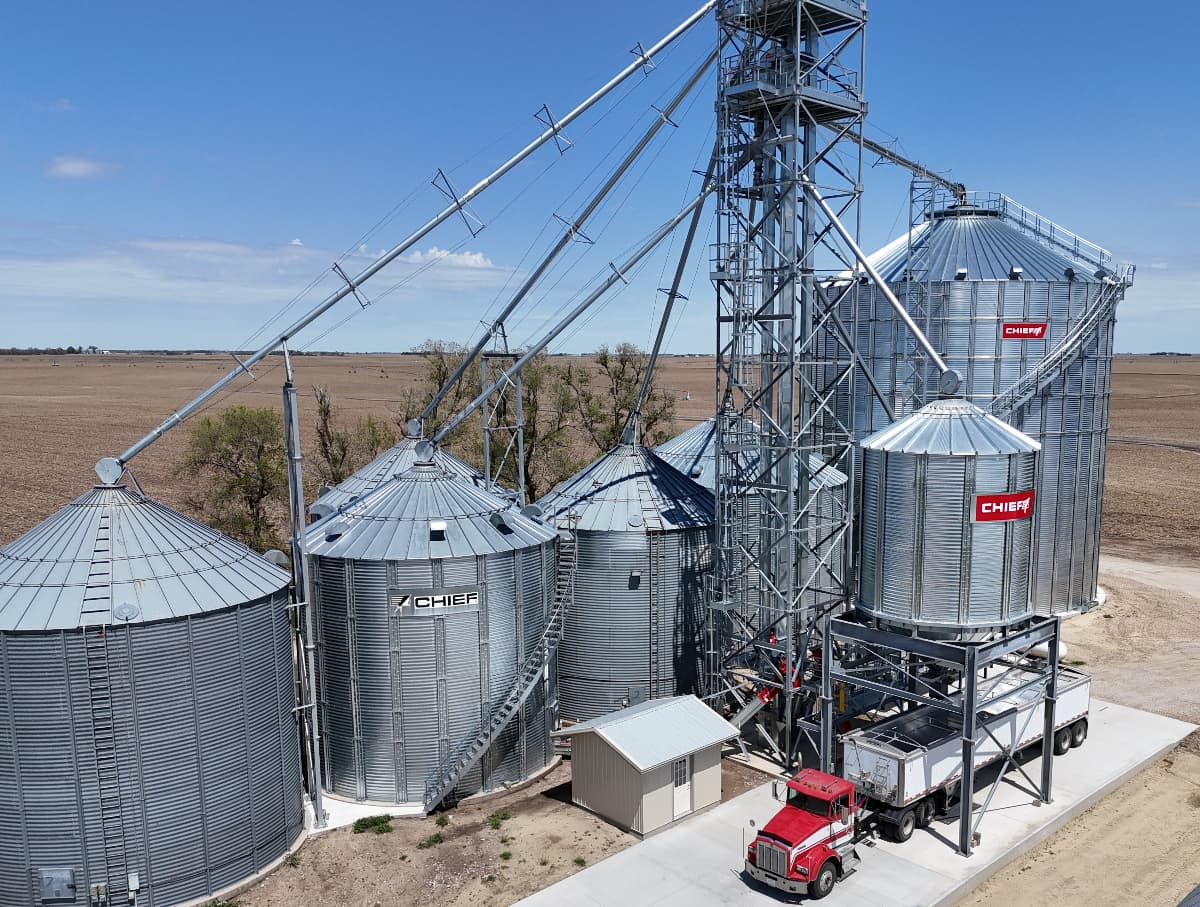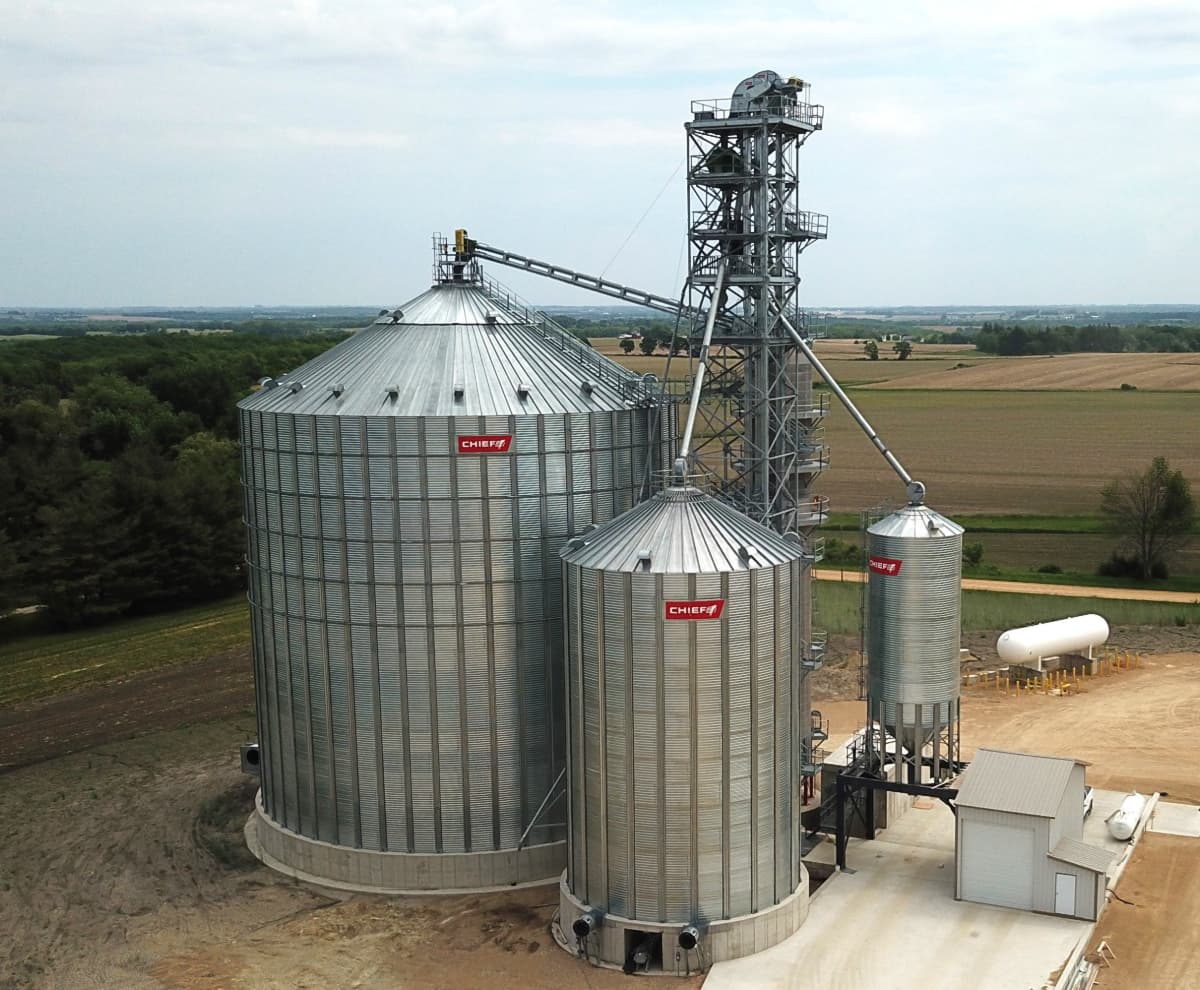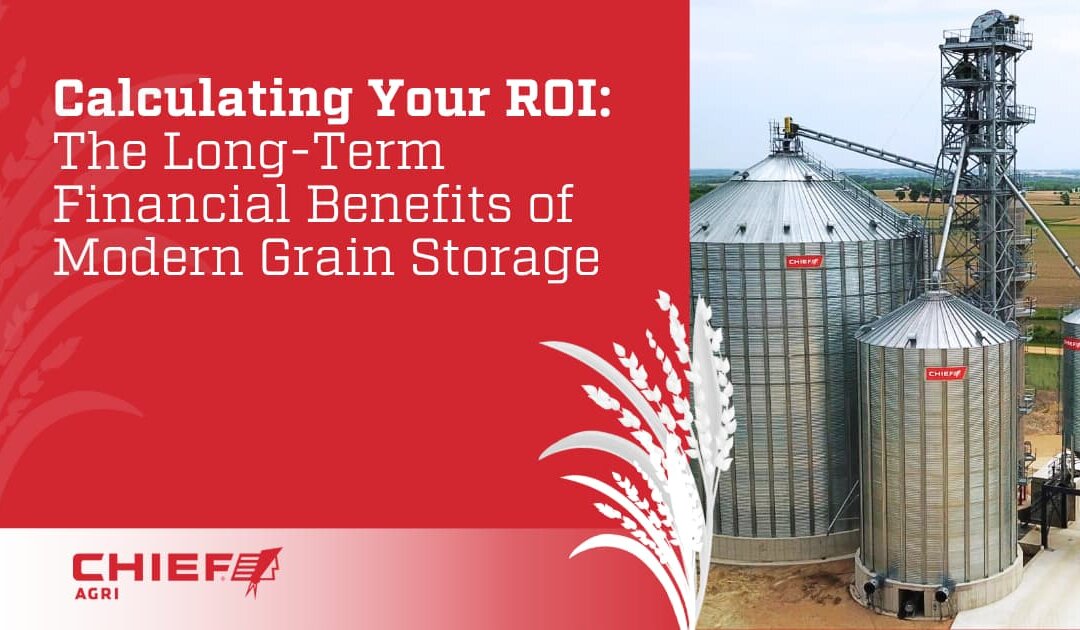Unlocking Your Grain Storage Return On Investment
Agricultural investment in modern grain storage, ranging from traditional bins to climate-controlled silos, is a crucial decision that directly impacts a farm’s bottom line. This strategic move allows producers to store harvested grains safely and efficiently, thereby boosting farm profitability through better market timing and avoiding harvest-time low prices. Ultimately, it’s about strategically positioning your operation for enhanced returns and securing a robust return on investment in agriculture equipment.
As a leader in grain storage solutions, Chief Agri understands the intricate balance between costs and return on investment (ROI) in grain storage economics. We’ll discuss how to calculate the ROI of your grain storage equipment, demonstrating the long-term financial benefits of choosing an innovative and efficient grain storage and handling system.

Why Investing in Grain Storage Pays Off
Investing in modern grain storage is more than just an expense; it’s a strategic move that unlocks multiple avenues for increased revenue and reduced costs, thereby directly contributing to the profitability of grain businesses. The ROI in agriculture from such a venture can be substantial, as it addresses key challenges faced by producers.
Market Timing and Price Premiums
On-farm grain storage allows you to capitalize on better market prices by avoiding the typical post-harvest dip when supply is high. By holding your grain, you can sell months later when prices rebound, capturing the “carry” in the market and significantly boosting farm profitability. This strategic flexibility also lets you seize “basis opportunities” when the local cash price strengthens relative to the futures price, a cornerstone of smart agricultural investment.
Quality Preservation and Value Retention
Modern grain storage systems are engineered to preserve grain quality, preventing spoilage, mold, and infestations through advanced moisture, aeration, and temperature controls. Avoiding discounts due to quality degradation is financially significant, as even small reductions can result in substantial price deductions. Conversely, maintaining optimal conditions can improve grain grade and test weight, leading to higher sale prices and boosting your overall agricultural investment ROI.
Operational Efficiencies and Cost Savings
On-farm grain storage offers significant operational efficiencies by reducing harvest bottlenecks, resulting in faster and less stressful harvests with lower fuel and labor costs. You’ll also eliminate commercial grain storage costs, including drying fees, handling charges, and transportation. Modern on-farm systems, particularly those equipped with automation, reduce ongoing labor and energy costs.

Grain Storage Economics: Calculating ROI
Understanding the financial benefits is one thing; quantifying them is another. Calculating ROI for modern grain storage systems requires a clear understanding of both the gains and the costs involved. This section provides a framework for evaluating the long-term financial benefits of grain storage investments.
The ROI Formula for Agricultural Investment
The general formula for ROI is:
ROI = (Net Gain / Cost of Investment) x 100
When adapting this for grain storage, the formula becomes:
Net Gain = (Increased Revenue – Storage Costs)
In the context of grain storage, increased revenue refers to the additional income generated beyond what would have been earned if the grain was sold immediately at harvest. It can come in the form of:
- Price Premiums: Selling grain at higher prices due to favorable market timing.
- Quality Bonuses: Receiving higher prices for superior grain quality maintained through proper storage.
- Avoided Discounts: Preventing financial penalties due to spoilage, mold, low test weight, or high moisture content.
Storage costs encompass all expenses incurred from the moment grain is harvested until it is sold. These costs may fall into the following three categories:
Initial Investment Costs
The upfront grain storage cost is the capital expenditure for the storage system, and it’s a significant factor to consider. It’s crucial to account for all components and understand the distinction between capital costs and soft costs.
The largest portion of capital costs for grain storage typically includes:
- Purchase and installation of grain bins
- Essential drying and aeration equipment to maintain grain quality
- Site preparation, including concrete foundations and drainage
- Handling equipment like augers and conveyors
- Expenses for electrical and utility hookups to get everything running
Soft costs associated with grain storage agricultural investment include fees for permits, engineering services for design and construction, and any financing interest paid over the loan term.
Operating Costs
Once the system is in place, there are recurring operational expenses associated with running the storage facility that impact the overall ROI in agriculture:
- Utilities: Cost of electricity or propane for drying and aeration fans, which can fluctuate based on grain conditions and energy prices.
- Labor: Time spent managing grain, including loading, unloading, monitoring conditions, and general upkeep.
- Maintenance & Repairs: Routine upkeep, preventative maintenance, and unexpected fixes to equipment.
- Insurance: Coverage for the stored grain and the storage facilities themselves.
- Pest Control: Measures to prevent and manage insect or rodent infestations, which can quickly degrade grain quality.
Opportunity Cost
These costs represent the interest or returns that could have been earned if the capital used for the grain or the storage facility had been invested elsewhere. Examples of opportunity costs are more efficient farm equipment for producers or expansion into new, profitable market segments for grain dealers.

ROI Example and Scenario
Let’s consider a hypothetical example to illustrate the potential ROI of agricultural investment in grain storage.
Scenario: A medium-sized farm investing in a 50,000-bushel modern grain storage system.
- Initial Investment: $150,000 (bins, dryer, handling equipment, concrete)
- Annual Operating Costs: $5,000 (utilities, maintenance, insurance, labor)
Potential Increased Revenue (per year):
- Price Premium: By holding grain for 4-6 months, the farmer consistently achieves a $0.50/bushel premium over harvest price. (50,000 bushels * $0.50/bushel = $25,000)
- Avoided Discounts: Eliminating 2% spoilage/quality discounts on 50,000 bushels at an average price of $4.00/bushel. (50,000 * $4.00 * 0.02 = $4,000)
- Total Increased Revenue: $25,000 + $4,000 = $29,000
Net Gain (Annual): $29,000 (Increased Revenue) – $5,000 (Operating Costs) = $24,000
Annual ROI: ($24,000 / $150,000) x 100 = 16%
Payback Period: 100% (initial investment) / 16% (Annual ROI) = 6.25
- At a 16% ROI, the initial investment would be fully recovered in approximately 6.25 years.
This calculation doesn’t even factor in the long-term asset value or the reduction in harvest stress. Factors like crop type, harvestable acres, and market volatility will influence the actual ROI. This example illustrates the substantial impact that grain storage can have on the profitability of grain farms and grain dealers.
Generally speaking, an ROI in the 7% to 10% range per year is widely recognized as a favorable investment outcome.

Best Practices for Maximizing Agricultural Investment in Grain Storage
Following industry best practices directly enhances efficiency, preserves grain quality, and optimizes market timing to boost returns. Maximizing the ROI of investing in grain storage requires strategic planning and diligent management in the following areas.
Optimal Solution Selection
First, assess your farm’s specific needs, including desired capacity, storage duration, and how new systems will integrate with existing infrastructure. Identify bin, dryer, aeration, and material handling components that are vital for maintaining grain quality and securing long-term financial benefits.
RELATED: Grain 101: Grain Types and Optimal Storage From Chief Agri
Effective Grain Management
Once the storage is in place, effective grain management is crucial for avoiding losses, preserving the value of your stored grain, and enhancing profits. Recommendations for effective grain storage include:
- Monitoring grain quality: Regularly using temperature and moisture sensors to detect potential issues early.
- Preventing spoilage, mold, and pest infestations: Implementing preventative measures and timely interventions.
- The role of timely aeration and drying: Actively managing these processes based on grain condition and external weather to maintain optimal storage conditions.
RELATED: Moisture Management Strategies for Commercial Grain Storage
Strategic Marketing and Sales
A strategic marketing plan includes understanding futures and basis contracts to mitigate price risk. This allows producers to hold grain for optimal selling windows, rather than selling it immediately at harvest. Maximizing farm profitability through the timely sale of stored grain is a skill refined over time, often in conjunction with expert market advice.

Strategic Agricultural Investment for a Sustainable Future
Modern grain storage is a significant and highly beneficial investment, crucial for boosting farm profitability and driving ROI in agriculture. It empowers grain producers and dealers with strategic market timing, preserves grain quality, and delivers operational efficiencies, ensuring greater control over harvests and financial futures.
For over 60 years, Chief Agri has been a trusted partner for strategic grain storage, demonstrating a long-standing commitment to innovation and quality that enhances your agricultural investment. We dedicate our extensive experience and leading-edge products to helping you achieve a more efficient and profitable grain operation.
Ready to unlock the full potential of your harvest and secure your financial future? Contact our sales team today to discuss customized grain storage solutions that fit your business needs.

